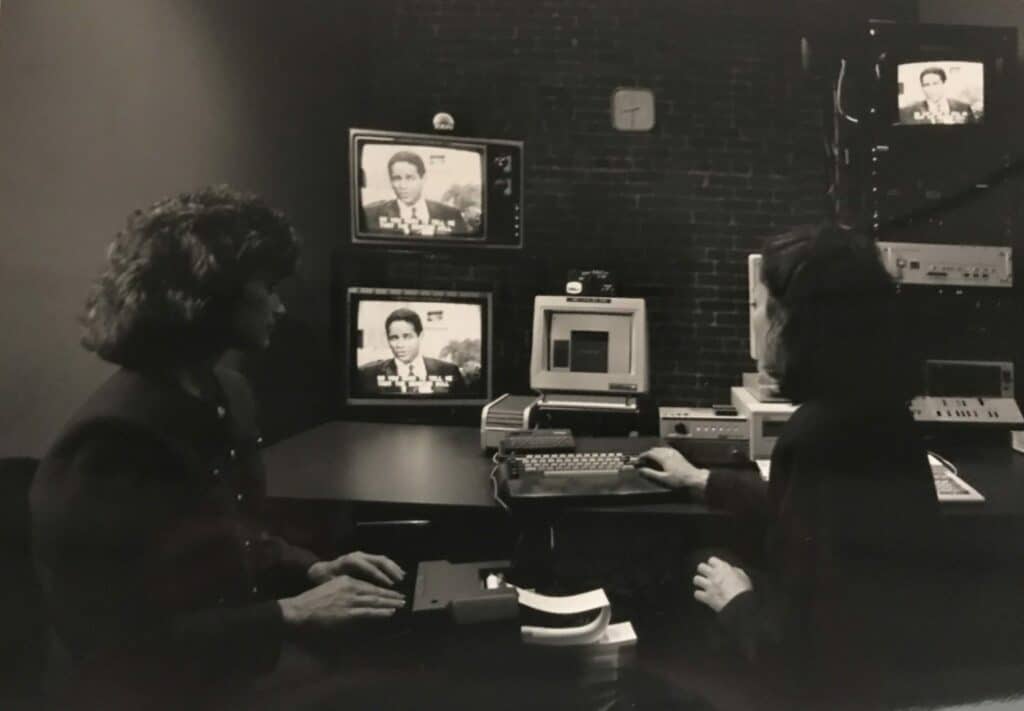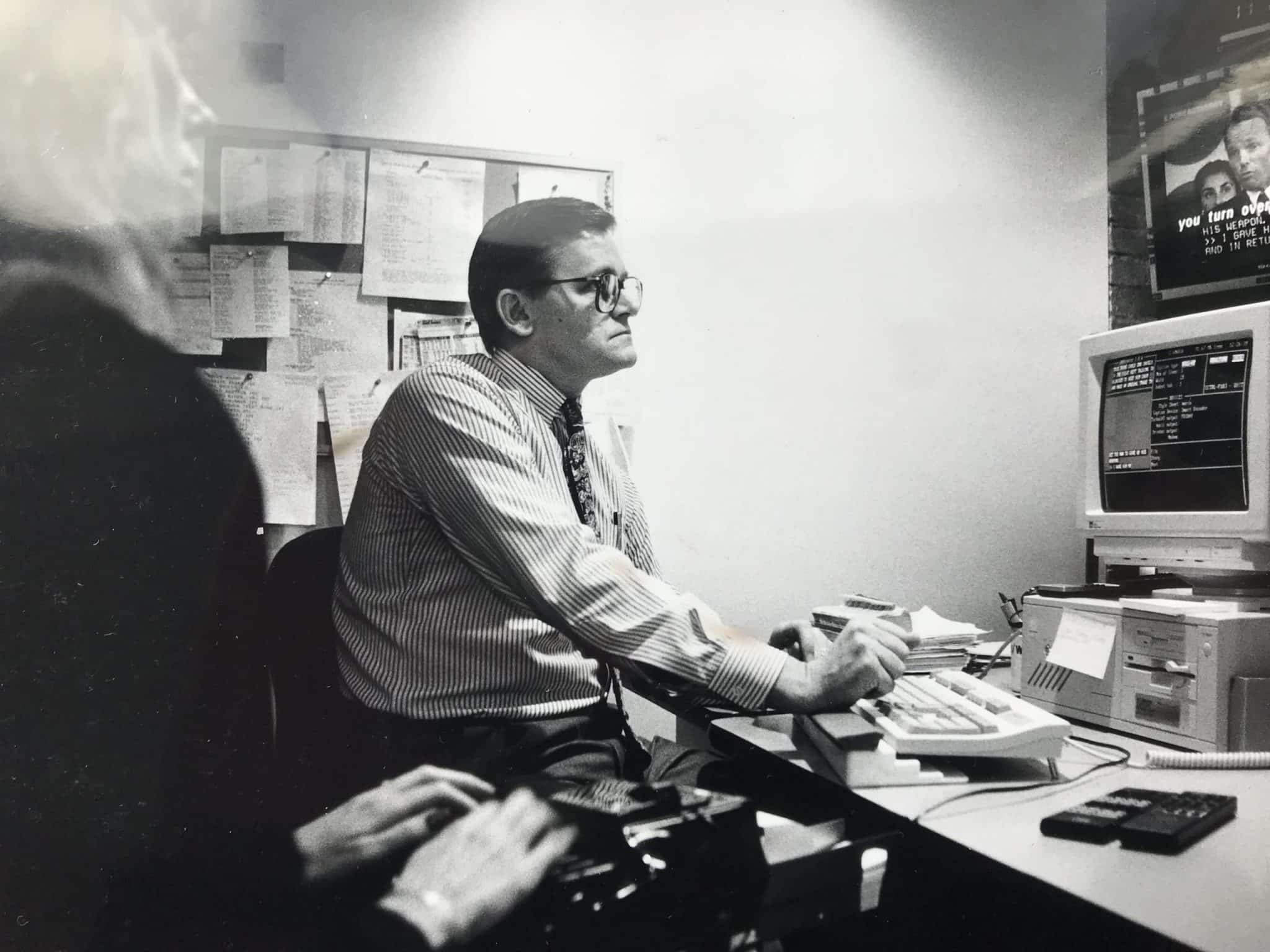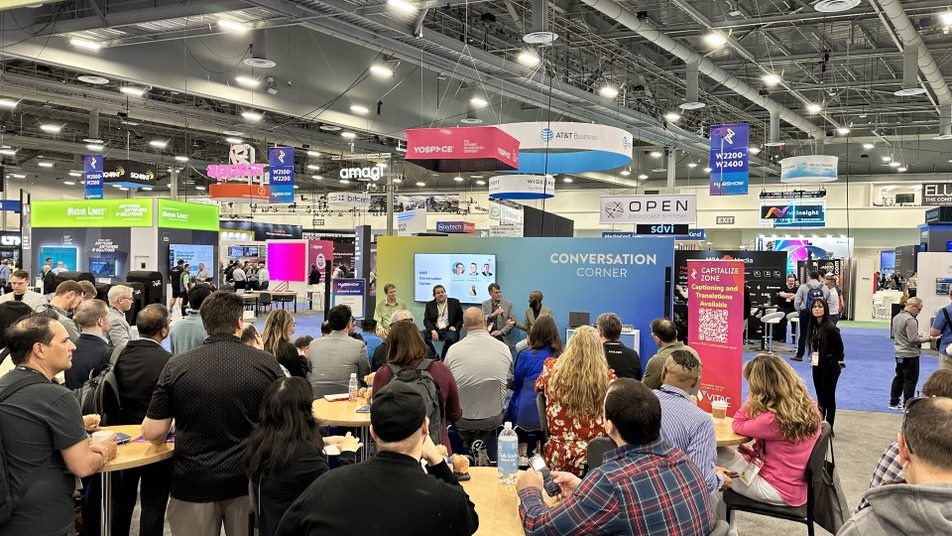This month celebrates the 40th anniversary of closed captions on television, and provides an opportunity to look back at TV captioning’s humble beginnings as well as the strides the industry has made since.
A recent article on Time.com highlighted the work that went into bringing those first closed captions to the screen.
Broadcasters ABC, NBC, and PBS debuted closed-captioned television shows in March of 1980, starting with “The ABC Sunday Night Movie,” “Disney’s Wonderful World,” and “Masterpiece Theatre.”
The captions opened the doors to new worlds of entertainment for millions in the deaf and hard-of-hearing (DHOH) community. However, this wasn’t the first time that captions had appeared on television screens.
 Open captions − captions that appear on the screen for everyone to see that can’t be turned on and off − had been introduced a handful of years earlier in 1972 on rebroadcasts of “The French Chef with Julia Child” and ABC News programs.
Open captions − captions that appear on the screen for everyone to see that can’t be turned on and off − had been introduced a handful of years earlier in 1972 on rebroadcasts of “The French Chef with Julia Child” and ABC News programs.
“The French Chef” is recognized as the first television program accessible to deaf and hard-of-hearing viewers.
Captioned broadcasts of the “ABC Evening News” aired at 11 PM at PBS. The program was not captioned using live realtime captioners but, rather, was recorded from the earlier 6 PM broadcast and captioned at a furious pace by a small team in the five-hour window between airings. The captioning team listened to the audio of the original broadcast, noting the timing of news reports and commercial breaks; transcribed the program; and checked the captions for readability. They then assembled the entire file, placed the captions, and reviewed display speeds.
Thankfully, captions and captioning have taken giant steps forward since those earliest days.
Today, the most accurate news shows are captioned live by skilled realtime captioners – steno captioners and voice writers – who write or respeak the words they hear on a program’s audio. Offline captions are created in advance for pre-recorded programs. Offline captioners are more than just good transcribers and spellers — they’re also masters of description, line breaks, timing, readability, sound effects, and common style rules. Both are experts in their craft.
And VITAC has played an important role, too. We began in 1986, and one of our founders – Jeff Hutchins – was the first man to be awarded a patent for a line 21 captioning encoder, while another founder – Marty Block – was the first person ever to live caption on television (the 1982 Oscars).
Captioning rules and regulations also have expanded over the years, reinforcing the need and absolute right of equal access to television for deaf and hard of hearing viewers.
In 1990, the Television Decoder Circuitry Act was passed mandating that all televisions 13 inches or larger manufactured for sale in the U.S. contain caption decoders.
In 2006, the Federal Communications Commission ruled that all new broadcast and cable television programs must include captioning (with some exceptions, such as captions for programs that air between 2 and 6 a.m.)
The 21st Century Communications and Video Accessibility Act of 2010 required programs first shown on television with captions to be captioned when later shown online, and a court ruling in NAD v. Netflix in 2012 found that online-only businesses may not discriminate against people with disabilities, thus requiring Netflix to make its online streaming content accessible.
The captioning industry continues to grow today, with new technologies being explored as new media and video outlets become more popular. We look forward to the future, and the continued expansion of “accessibility for all.”




